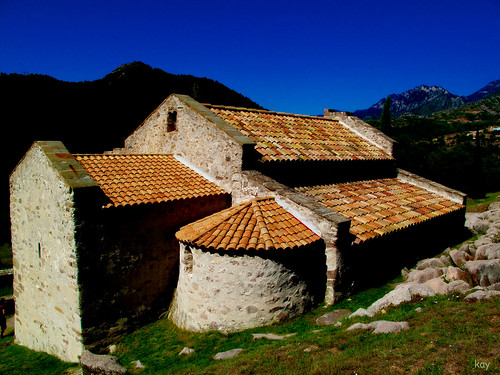
Reserve Catalan donkey, one of four stops to discover the region’s mountainous Berguedà, north of Barcelona. Wonders of the Roman and views from the viewpoint of Gresolet
The province of Barcelona has coastline, but many are unaware of what the mountain in the Berguedà, as denoted by the natural park of doubt Cadí-Moixeró. Without making an appeal such as Montserrat, Berguedà is a county in which the whole is greater than the sum of its many attractions. For example, four buttons.
This is a superb testament to the industrialization that made Catalonia Spain factory. Textiles up to 33 colonies on the banks of the river Llobregat, of which 16 belong to Berguedà. Can Vidal was the last to be built (1901), maintained its vitality until three decades ago, and we feel one hundred years after the daily reality of a textile center self-sufficient.
As with the other colonies, Can Vidal had a dam that guaranteed electricity (kilowatt turbines generate even) without prejudice to the steam engine required for times of drought. The interesting tours, the museum also includes the social areas of the proletariat: school, church, commissary, movie theater, an apartment and even the laundry room (with a corner reserved for contagious patients). This work hard, but surely, in return was a paternalism, a total submission to the master in days of 66 hours per week. In the hall looms became a bale of cotton spinning. At the start of the looms of a club is found to deafen the noise experienced by operators.
Catalan, Olvan
The wisdom of Catalonia is the cattle or donkey RUC native, whose label carries a symbol of identity with the enrollment of many vehicles. The “RUC” is a strong animal and high notes, ready, docile (touch ears very gently), calm and lively at the same time, black coat, except as an eye mask, nose and belly, ranges white. From time to time we hear braying apparatus, as if off a force of nature. The best time to photograph it in the morning, when the 150 donkeys come to eat.
Sant Quirze of Pedret
Entering Berga Center is reached by a magnificent Gothic bridge traversed by a river Llobregat become singing. Then walk 450 meters is required for a care landscape to the church of Sant Quirze. Apse and the trapezoidal warns pre-Romanesque style, but looking at the horseshoe arches in the presence of these walls worth of century X. The paintings, the fruit of orthopedics muralística were replaced by copies. Still, the mystery persists in the central apse with the paintings of the Pre-Romanesque and prayerful Knight, who appeared in 1937 and the originals of which are described in the diocesan museum of Solsona (Lleida). In the north apsidioles shine the apostles in the Romanesque style, and apsidioles in the south, the visitor receives a course and flow chart of how the explosion of color offset the gloom brought about by the alabaster windows. With them, the teacher helped Pedret spread between the official doctrine of some peasants wavering convictions. Wonder of the delicate simplicity of the wise and foolish virgins. The originals in the National Art Museum of Catalonia (MNAC).

On the road to the panoramic mountain Pedraforca, the abundance of nature as a first impression raised in full Pyrenees. The silhouette of Pedraforca bicuspids magnetize it all. After the diversion Maçaners should make available to the camera to portray Pedraforca better with the morning sun. And on your right you can see the silhouette of the peak Comabona.
In addition to the Romanesque carving of the Virgin in Saldes is the center where those who wish to report walking or climbing the mountain. Spent five and a half hours to cover the 960 meters to the summit. Exit back to the road to Gósol embocadas and the viewpoint of Gresolet, overlooking the valley of the same name. In 15 minutes, the traveler reaches Lluís These refuge to enjoy the northern face of Pedraforca. Jordi and Joan prepare rice on mountain reserve.
Leave a Reply
You must be logged in to post a comment.
Recent Comments